QuestionHello Corlena, I live in Oklahoma and have AQHA horses aged from weanling to 30y.o. I am feeding free choice hay and about 4-6# bulk feed (oats,corn,alfalfa pellet,fat) to each animal/day. My issue is that none of my horses have any fat layer meaning I can see ribs and there is no fat along the spine. These horses are not under stress of exercise and all are on pasture although there is not much grass this time of year. I have had the hay tested its tested as follows 87.8 % dry matter, 12.2% moisture, 7.7%crude protein, ADF44.1%, TDN 54.5%, net energy DE 1.09 MCal/lb: the grain was also tested dry matter 86.9%, moisture 13.1%, crude protein 14.2%,ADF 22.2%, TDN 71.6%, Net Energy 1.43MCal/lb. I have wormed all horses and all have a healthy coat not dry or dead. All horses are bright eyed and seem to be energetic. Mares are cycling appropriately??? Just do not know what to look at next? Appreciate any suggestions. I can send pictures if you want.
AnswerHello Julie,
Thank you for your question, and for the detailed snapshot of what is going on on-farm. It really helps. If I calculate a ration for an average 1200lb horse (maintenance only, no exercise) using the grain analysis fed at 5lbs/day and the hay analysis (assuming values are quoted on 'as fed' basis) fed free choice, that horse's energy and protein requirements are met. So technically, they should be able to sustain and 'acceptable' body condition. But a ration balanced on paper doesn't always deliver the expected results...as seems to be the case here.
I can make a few observations that may be of help. Your forage, although it has an average DE content, is high in indigestible fiber (ADF). ADF represents the cellulose and lignin components of the forage which the horse can not ferment and convert to energy. When lignin levels get too high, they then interfere with how the horse can ferment otherwise available hemi-cellulose and cut down on the overall energy availability in the forage. So although the energy levels seem acceptable on paper, the reality is that your forage falls short in available energy. We see this often enough with mature alfalfa forages, and the end result can be energy deficiency in the horse (what you see is 'ribby' horses with 'hay' bellies).
Taking a look at your bulk feed, I would be a bit concerned about the level of starch there is in the diet, and the digestibility of that starch. Oats are a decent source of starch for horses, if indeed the horse needs starch at all. But corn is by far my least favorite starch source. Corn has a very low pre-cecal digestibility level (30%, which is very bad) unless it is steam flaked...and even then it should be used with caution. This means that over 70% of the corn that is consumed escapes digestion in the stomach and makes it to the cecum, where it is fermented by bacteria producing gas, lowering cecal pH and interfering with forage digesting. This worsens the problem you already have with an undigestible forage. Over the long term, the horses loose the a large portion of the bacterial population required to ferment forages to energy. Again, what you end up with is 'ribby' horses with 'hay' bellies.
Here is what I would recommend. It is difficult to change forage sources. Once your hay is made, you're saddled with it until next year. The one thing you can do to help maximize the efficiency of what you have is to feed yeast or consider a good quality pre-biotic with yeast in it. These products will help stabilize bacterial populations in the hindgut and have them working at maximum efficiency to get what energy they can from the forage. More importantly, get rid of the corn. If you really need the starch, which I'm not entirely convinced of, stick with oats. Consider feeding beet pulp instead. As far as the horse's digestive tract is concerned, beet pulp is a super duper forage source. It is rapidly digestible with the energy value of grain but without the starch load. Contrary to popular belief, you can feed beet pulp pellets without soaking them, so you can feasibly include them in the bulk feed. Beet pulp shreds should be soaked before feeding. Make sure the fat in your bulk feed is from a vegetable source and not from animal sources. Horses have a very limited ability to digest animal fat. If you want to diversify your protein source, consider feeding soybean meal or even soybeans if your bulk mix can't include meal. The alfalfa pellets bring sufficient crude protein, but if your hay is also alfalfa based you might find the ration short in lysine...the most important amino acid for building muscle. Soybeans are great for this, but feed in moderation especially if you have broodmares.
I hope that helps!
Thanks, Corlena

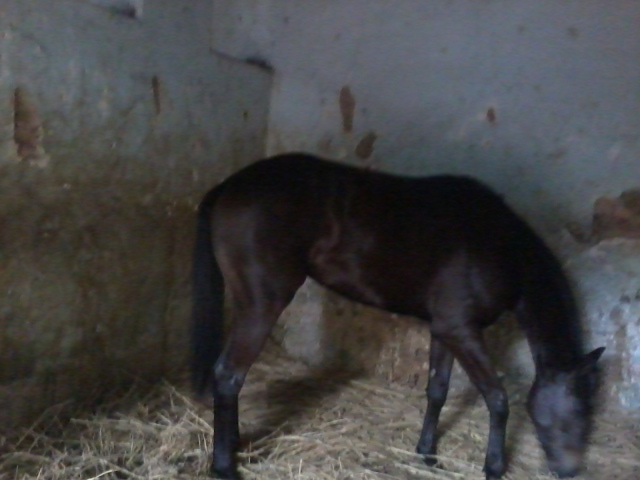 raw milk for under developed baby horses
Question
under developed
hello maam. top trainer
raw milk for under developed baby horses
Question
under developed
hello maam. top trainer
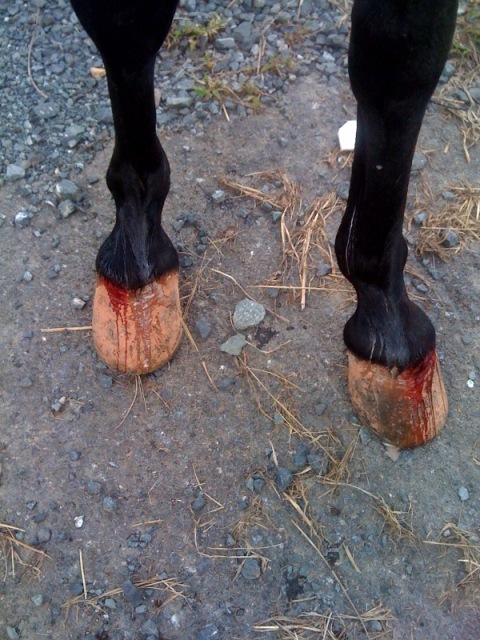 bleeding hooves
Question
bleeding
hi corlena! I have attached a photo s
bleeding hooves
Question
bleeding
hi corlena! I have attached a photo s
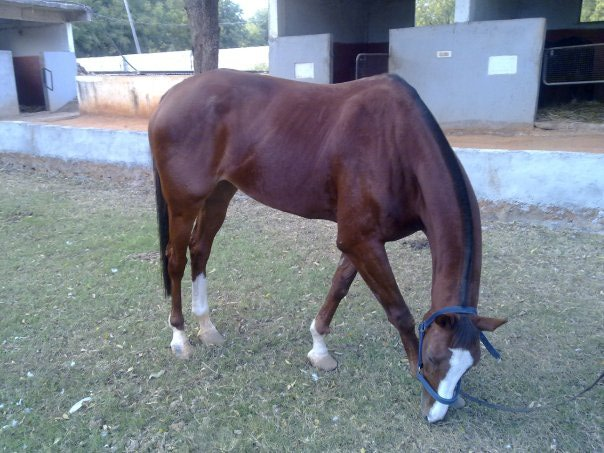 horse lacking muscle
Question
horse lacking muscle
hello maam, can i
horse lacking muscle
Question
horse lacking muscle
hello maam, can i
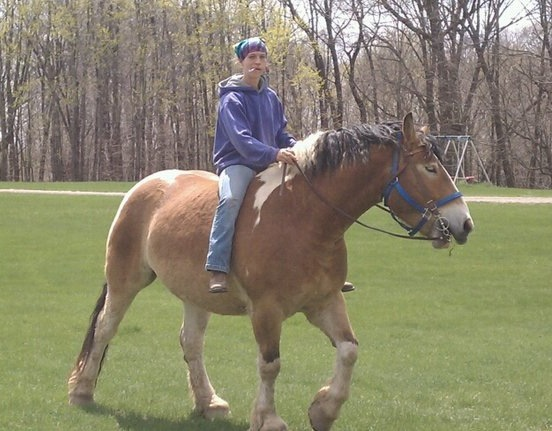 My new draft horse.....
Question
Bubbs Gentle Giant
I have just pu
My new draft horse.....
Question
Bubbs Gentle Giant
I have just pu
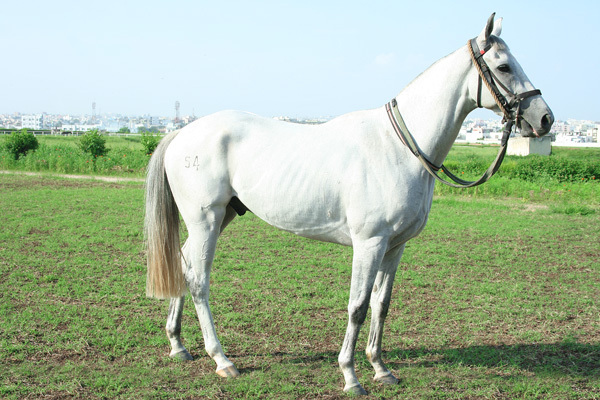 guessing the horse weight seeing it
Question
guess weight
hello maam. this is a thor
guessing the horse weight seeing it
Question
guess weight
hello maam. this is a thor